By reviewing the latest eBay Completed Sold Listings (a.k.a., Comps) of your item, you’re better able to get an idea of the current market value of said item. This information helps both in pricing/valuing your item and negotiating with a seller. To access eBay Completed Sold Listings, follow these steps:
1. Run a search in the eBay search field at the header of the home page at eBay.com.

Your search results will return a list of results organized by Best Match with top listings having the most relevant content associated with the keywords in your search query.
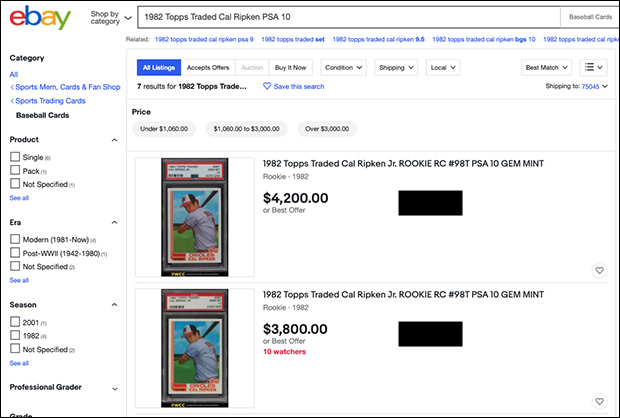
2. Scroll down and find the Sold Items check box on the left sidebar.
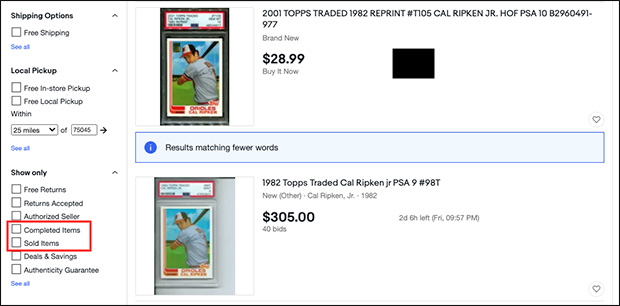
Two options exist here:
- Completed Items: This option will return all completed listings for the item in your search query regardless of bids or not.1
- Sold Items: This option will return all completed items that captured bids for which the dollar figure will be highlighted in green to indicate their sold status. For the most part, these green numbers help indicate current market values.2
3. Click on the checkbox for Sold Items.
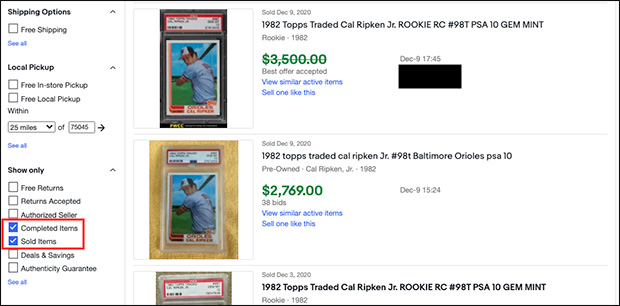
Sold Items are Completed Items so that option will also be applied to your search results. The default organization of your search results will be organized as Ended Recently.
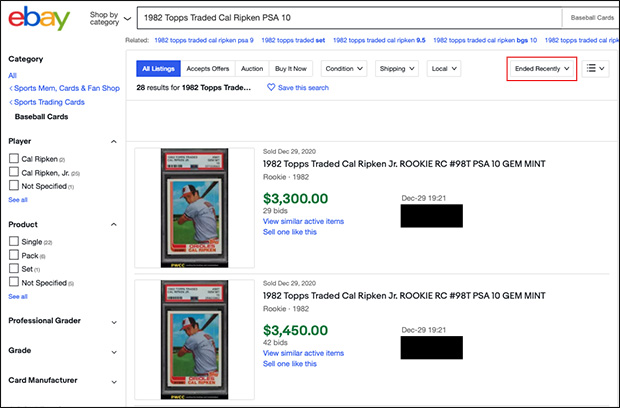
4. To get an idea of current market cap and averages, change the organization to Price + Shipping: highest first.
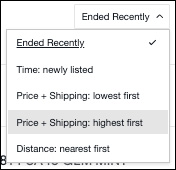
This will return the highest final value auction first with lesser values below. Scroll down to get an idea of where your card falls in terms of current market value.
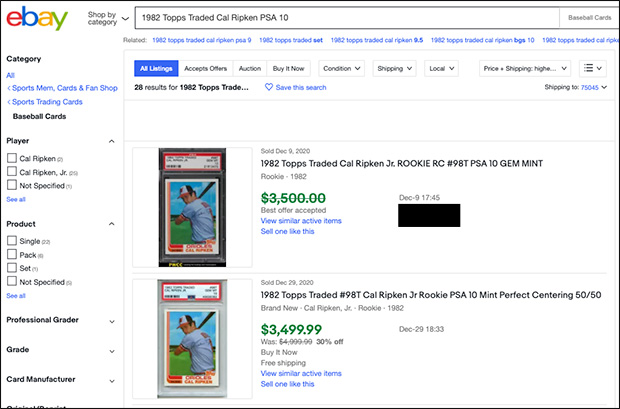
Try it! To access eBay and search comps, click here.
References:
- It’s important here to note the difference between Actual Market Value: What the majority of a target market is willing to pay on average for an item, and Perceived Market Value: What a seller feels is what something is worth regardless of what the market thinks. Things that haven’t sold aren’t part of the current actual market value conversation; these are two completely separate conversations. Anyone can put any price they want on something; it doesn’t mean that thing is worth that price. ↩︎
- The generally accepted notion here is that something is worth what someone is willing to pay for it but there are exceptions to this rule. Someone might be willing to pay more for something with a low BIN (Buy It Now) price, which means the sale of that item may introduce an inaccurate perceived and deflated market value for that item. This is great for buyers but bad for sellers. Another case involves shill bidding – organized intentional bidding in an effort to drive up final values (highly unethical and goes against eBay policy) – which creates highly inflated perceived market values. A third case involves items being listed using the ultra high BIN/OBO format, which again promotes inflated sale prices. All of these instances can destabilize current actual market values. ↩︎

 Have you visited our store? Click here.
Have you visited our store? Click here.



No Responses